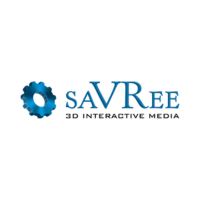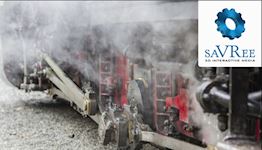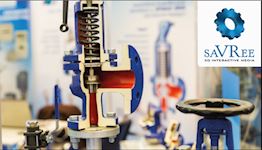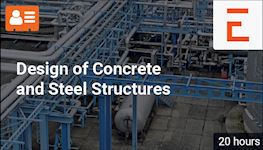Pipe Flange Fundamentals
Why take this course?
This self-paced course provides a detailed introduction to bolted joints in piping systems, focusing on flanges, gaskets, and fasteners. Topics include flange types, pipe specifications, pressure classes, gasket materials, and testing methods. Ideal for various engineering fields, the course features video lectures, quizzes, and awards a certificate with PDH credits.
What you'll learn
After this course, you will understand...
• Flange Terminology and Nomenclature
• Flange Types (welding neck, slip-on, lap joint etc.)
• How Flanges Work
• Piping Codes, Standards, and Specifications
• ASME, ASTM, ANSI, ISO, EN, API etc.
• Pipe Types (seamless, welded etc.)
• Pipe Ends (bevel, threaded etc.)
• Nominal Pipe Size (NPS)
• Pipe Schedule (thickness etc.)
• Pressure Class (150#, 300# etc.)
• Flange Materials
• Flange Faces (flat face, raised face etc.)
• Flange Surfaces (smooth, serrated etc.)
• Concentric and Spiral Serrated Surfaces
• Roughness (AARH, Ra etc.)
• Gasket Types (soft, hard, composite etc.)
• Fastener Types (bolts, studs etc.)
• Weld Types (butt, fillet etc.)
• Non-Destructive Testing (types and applications)
• And much more!
About the course
You will encounter pipes and joints even if you are not working in an engineering related industry. Fluids must move within piping systems in a safe and efficient manner, and it is pipes, joints, and valves, that allow this to occur. But what are joints?
A joint can be welded, screwed, or bolted. This course covers the topic of bolted joints within piping systems. Specifically, you will learn about flanges, gaskets, and fasteners, which are the essential components of bolted joints. The course covers:
Flange Terminology and Nomenclature
Flange Types (welding neck, slip-on, lap joint etc.)
How Flanges Work
Piping Codes, Standards, and Specifications
ASME, ASTM, ANSI, ISO, EN, API etc.
Pipe Types (seamless, welded etc.)
Pipe Ends (bevel, threaded etc.)
Nominal Pipe Size (NPS)
Pipe Schedule (thickness etc.)
Pressure Class (150#, 300# etc.)
Flange Materials
Flange Faces (flat face, raised face etc.)
Flange Surfaces (smooth, serrated etc.)
Concentric and Spiral Serrated Surfaces
Roughness (AARH, Ra etc.)
Gasket Types (soft, hard, composite etc.)
Fastener Types (bolts, studs etc.)
Weld Types (butt, fillet etc.)
Non-Destructive Testing (types and applications)
And lots more!
This is an ideal course for anyone working in the Oil and Gas, Petrochemical, or Chemical Engineering industries, but it is also useful for any working engineer (flanges are everywhere!).
The course is suitable for people just starting their career, or as an efficient refresher for old hands.
Who should attend this course
• This course is designed for Piping Designers, Pipe Stress Engineers, Mechanical Engineers, Process Engineers, or Maintenance Engineers with 0-3 yrs of experience.• This course is beneficial for anyone in the oil & gas, HVAC, chemical engineering, mechanical engineering, or power engineering industries.
Prerequisites
• Basic engineering background knowledge is beneficial but not essential.Program & Details
-
Welcome
1. Welcome & Your instructor
2. Content overview
3. How to use this course -
Introduction
1. Welcome
2. Introduction
3. Flange Terminology
4. Bolted, Threaded and Welded Joints
5. Piping Joint Example
6. Expansion Joints
7. Flange Construction
8. How Flanges Work
9. Basic Flange Math -
Flange Defining Factors
1. Flange Defining Factors
-
The Need for Standardization
1. The Need for Standardization
2. Regulatory Organisations
3. Insurance
4. Codes, Standards and Specifications -
Pipes and Piping
1. Pipes and Piping
2. Piping Systems
3. Pipe Types
4. Pipe Ends
5. Pipe Sizing History
6. Nominal Pipe Size (NPS)
7. Diameter Nominal (DN)
8. Larger Pipe Sizes
9. Pipe Wall Thickness
10. Schedule (SCH)
11. Flange Schedule -
Defining a Flange
1. Defining A Flange
2. Flange Pressure Class
3. Flange Pressure Class Examples
4. Determining Pressure Class
5. Pressure Class Tables
6. Pressure Class Table Examples
7. Flange Pressure Class Effect
8. Flange Dimensions
9. Flange Material Selection
10. Flange Material -
Flange Faces
1. Flange Faces
2. Plain Face/Flat Face (FF)
3. Raised Face (RF)
4. Ring-Type Joint (RTJ)
5. Flange Face Summary -
Flange Faces Surfaces
1. Flange Face Surfaces
2. Surface Finish
3. Smooth Flange Surface Finish
4. Serrated Flange Surfaces
5. Concentric Circular Groove Surfaces
6. Spiral Groove Surfaces
7. 3D Model Of Serrations -
Roughness and Surface Finish
1.Roughness and Surface Finish
2. Roughness Average (Ra) -
Gaskets and Sealing Agents
1. Gaskets and Sealing Agents
2. Gaskets
3. Soft Gaskets
4. Hard Gaskets
5. Composite Gaskets
6. Screw Thread Sealing Agents -
Nuts and Bolts
1. Nuts and Bolts
2. Bolting Criteria
3. Bolts
4. Nuts
5. Washers
6. Bolting Procedure
7. Alignment -
Flange Types
1. Flange Types
2. Welds
3. Non-Destructive Testing (NDT)
4. Welding Neck Flange
5. Slip-on Flange
6. Socket Weld Flange
7. Lap Joint Flange (LJF)
8. Threaded Flange
9. Blind Flange
10. Flange Types Summary
11. Special Flange Types -
Final Thoughts
1. Final thoughts
-
Final Notes & Certificate
1. Congratulations
2. Course evaluation survey
3. Your Personal Certificate
Certification
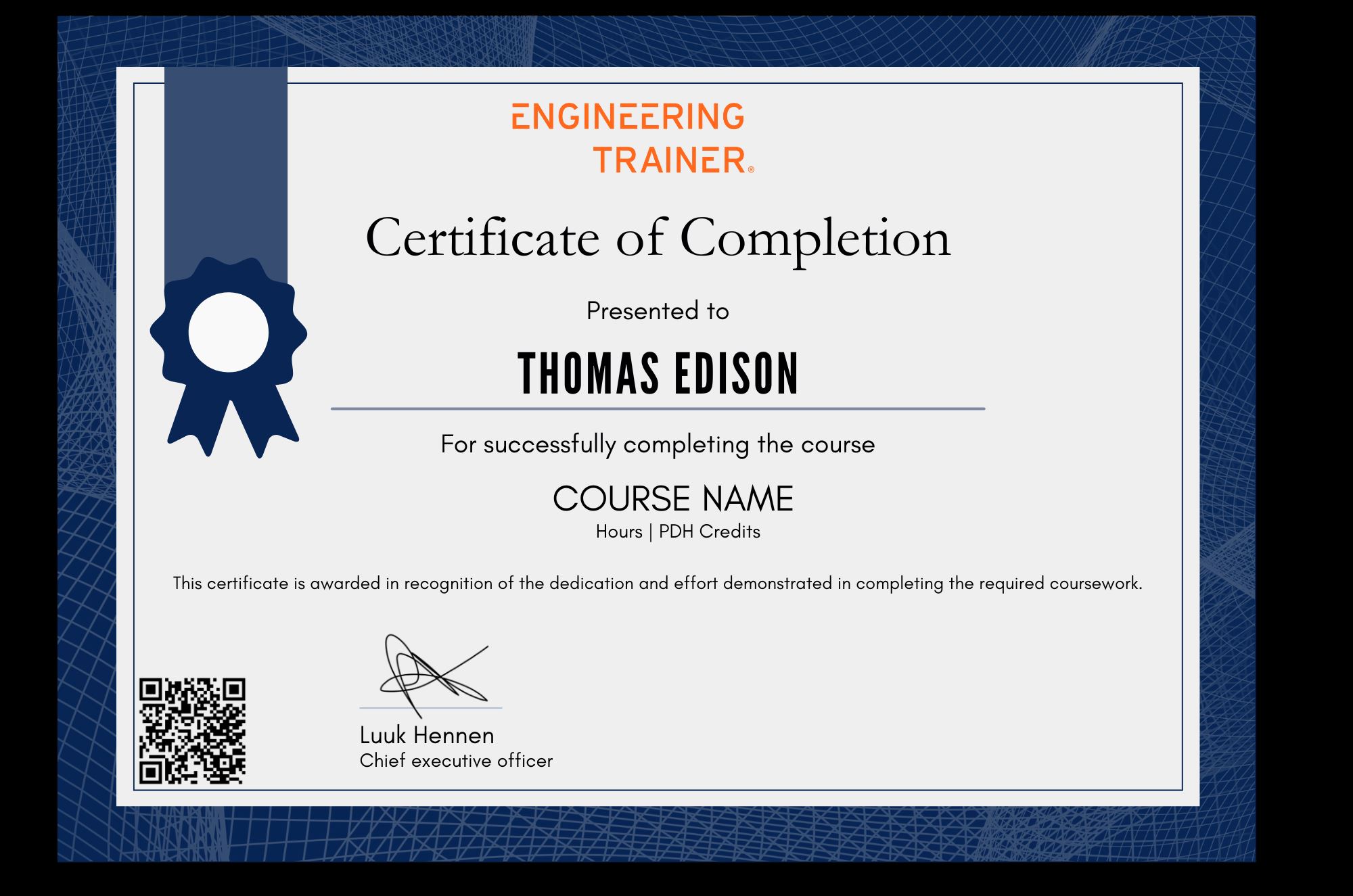

Why choose EngineeringTrainer
-
Unlimited Team-wide Access
-
Advance Technical Competences
-
Courses by Industry Authorities
Since using EngineeringTrainer our internal mentorship has a much more matured character.
Logan Chapman - COO at Chapman Consulting Inc.



